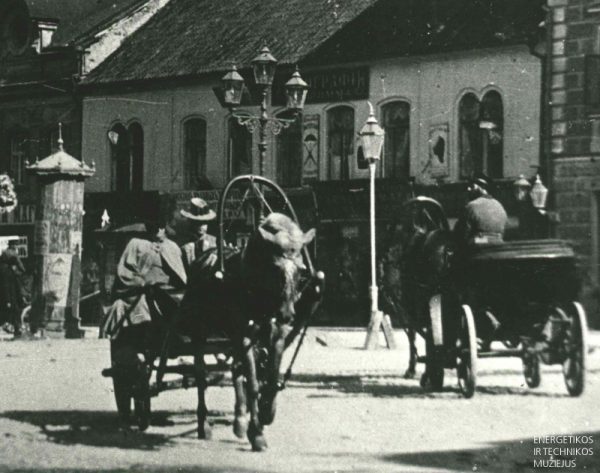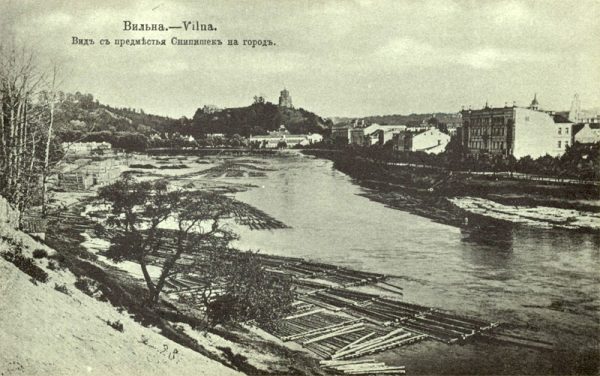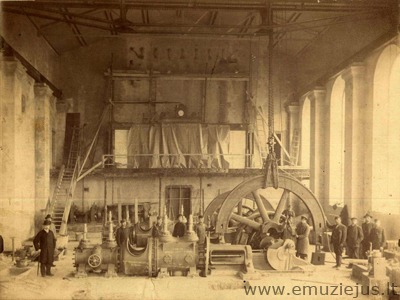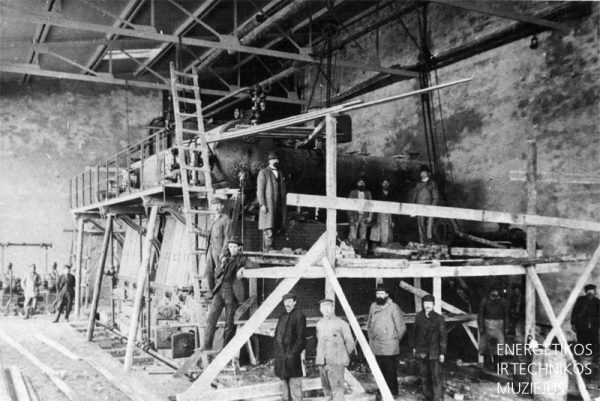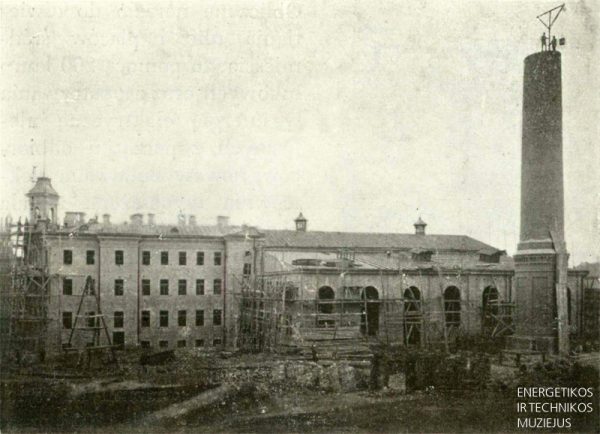CITY'S POWER PLANT HISTORY
Since 1864 Vilnius city streets were lit with kerosene or gas type street lamps. The latter gas type lamps were lit with gas produced in the former gas factory, located in the area of contemporary Opera house and managed by the New Berlin gas joint-stock company. However, kerosene and gas street lamps light was weak, and their maintenance was complicated – every morning and evening, the lamps required service of the lamplighters.
In the end of 18th century Vilnius was still using kerosene and gas lamps. However, contracts with gas company was about to end on December 3, 1897. The City magistrate has set up preparatory commission to adjust and prepare a draft for Vilnius lighting electrification. On November 19, 1898 the commission presented its general observations on the subject to the City magistrate which, in agreement with the findings of the commission set out in the report, bound it to:
- Prepare a detailed central power plant construction project and sign a contract with a company, which conditions will be recognized as the most favorable for the city.
- Reach an agreement with the owner of the plot, which will be recognized as the most appropriate for the central power plant.
- Call the person willing to lease the plot for the city’s central power plant and prepare the final draft delivered to Magistrate to adjust approval.
- After the governmental approval of the project invite engineers for supervision.
- Immediately begin a detailed planning and budgeting of the building <…> (Commission chairman J. Motvill. Members: F. Petraškievič, J. Fechner, K. Falevič, L. Šostakovskij, M. Venslavskij, V. Stypulkovskij, E. Bortkievič, S. Valerštein, A. Zmačinskij. Electrician K. Guščia).
The search of the place for the city power plant started. There were a few options in Paplavos (Kopanica street) Safjanikai (today’s Tymas market place), Bernardine gardens. The latter paid off financially (as the place already was the property of the city), but the establishment of the power plant in the town garden would have accumulated smoke and diminished the greenery in the area.
Therefore, eventually, in June 1901 the Magistrate selected a site in Petrozavodzkaya street (ул. Петрозаводская) – on the right bank of the Neris river. The plot was big enough (1 087 sq.) and close to water which is necessary for power plant operation. In addition, the city expanded towards Žvėrynas district.
Before starting the construction of the future power plant local lumberyard was raised, and formation of a new Fishermen street (ul. Rybaki) was initiated.
Construction under the direction of the project author engineer Wladyslaw Malinowski, began in August 1901. The administrative building, turbine and boiler halls were built as well as the power plant chimney and interior equipment.
The Magistrate has decided to refuse the services of Berlin gas joint-stock company in 1899. The concession for urban lighting and operation was given to no other company. All the rights of production were held in Vilnius city magistrate hands. So the city released bonds to build the power plant and stated three reasons for that:
- Electric lighting is technically advanced and has the potential to support industry.
- Having modern power source will be hygenic (the Magistrate had idea to move out industrial sites out of the Old Town area and try to concentrate industry in the outskirts of the city.
- Modernizing horse tram (‘konkė’) into electric tram.
Specialists from Warsaw installed two steam engines from the ‘Orthwein, Karasiński i S-ka’ plant in the turbine hall, and two Steinmüller type boilers from the ‘Bormann i Szwede’ in the boiler room.
It was planned to launch the power plant on January 14 (Jan. 1 according to Julius’ calendar) 1901, but the storm broke down crashing poorly installed new lightbulbs. The official launch of the power plant was postponed for a month.
On February 14, 1903 (Feb. 1, according to Julius’ calendar) the main streets of Vilnius were lit by the light of arc lamps.
In August 1915, retreating Russian troops intended to blow up the power plant, but its first director, W. Niewodniczański, negotiated and managed to save it.
1931 a high-voltage switchgear is being built as the power plant expands.
1933 the power plant switches completely to alternating current.
On July 6, 1944 retreating Vermacht troops have blown up the power plant. The power plants’ boiler and turbine halls were destroyed, leaving only its administration building intact. Ironically, the ruins were cleaned up by the German war prisoners.
Vilnius central power plant was modernized several times and reconstructed after World War II.
The power plant was shut down in 1998.

